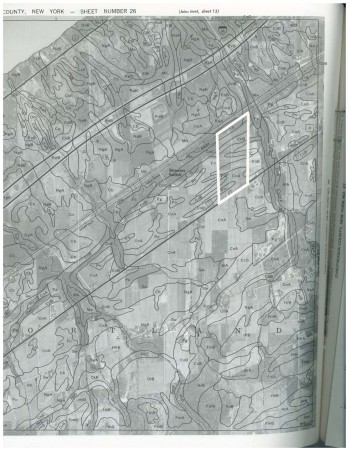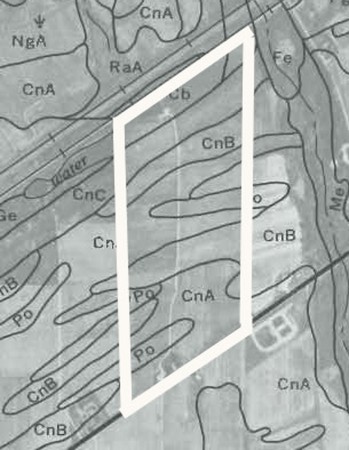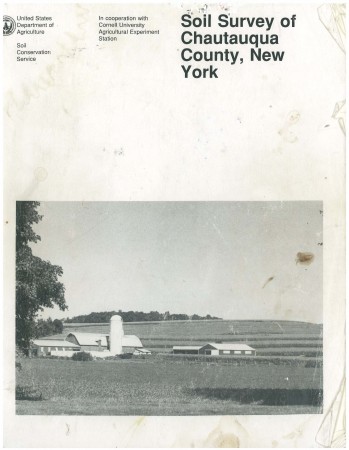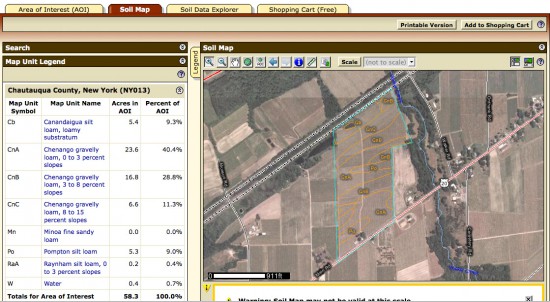2-years Pre-plant · Review Soil Maps
Like gardening in your backyard, soil composition and structure are important in wine grape production. Luckily, soil maps are easy to access, whether through the USDA Web Soil Survey, or books from your local extension office. (See following 3 images below).
figure 1: soil survey
Gravelly, well-drained soil is ideal in grape production, because grapevine roots do not want to be submerged in water. On the flip side, too-well-drained soil can create an issue with nutrition, as in, the soil organic matter might be too low to sustain wine grape production.

figure 2: A soil map of the Cornell Lake Erie Research and Extension Laboratory (CLEREL) in Portland, NY from the Soil Survey of Chautauqua County, New York compiled by the USDA and the Soil Conservation Service

figure 3: A close-up of the CLEREL site shows the different soil types.
The soil is mostly well-drained Chenengo (CnA/CnB).
A CLEREL soil map from the USDA Web Soil Survey site
Soil maps can also provide and excellent base for your vineyard maps. If there are two different soil types at your site, consider planting one block of vines to each soil type, IF this is also practical. Nutrient management will be much easier once you are aware of possible drainage or nutrient differences. Finally, when you submit soil samples, you will need to enter the soil type on the form for the soil tests and for more appropriate recommendations.
Content by:
Dr. Jodi Creasap Gee
Viticulture Extension Educator
Lake Erie Regional Grape Program



